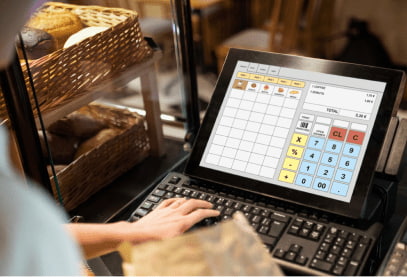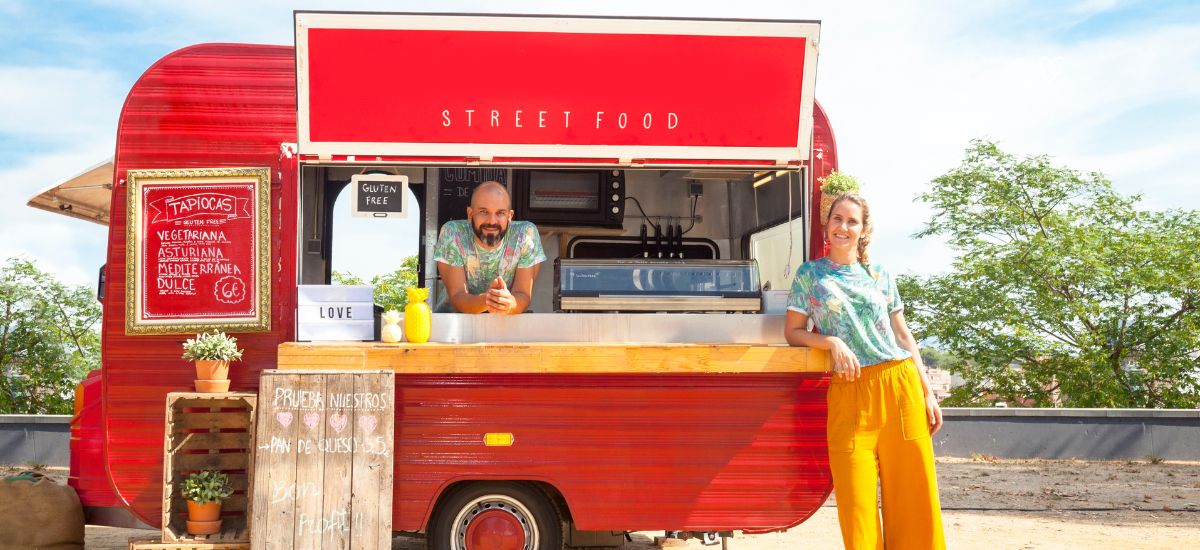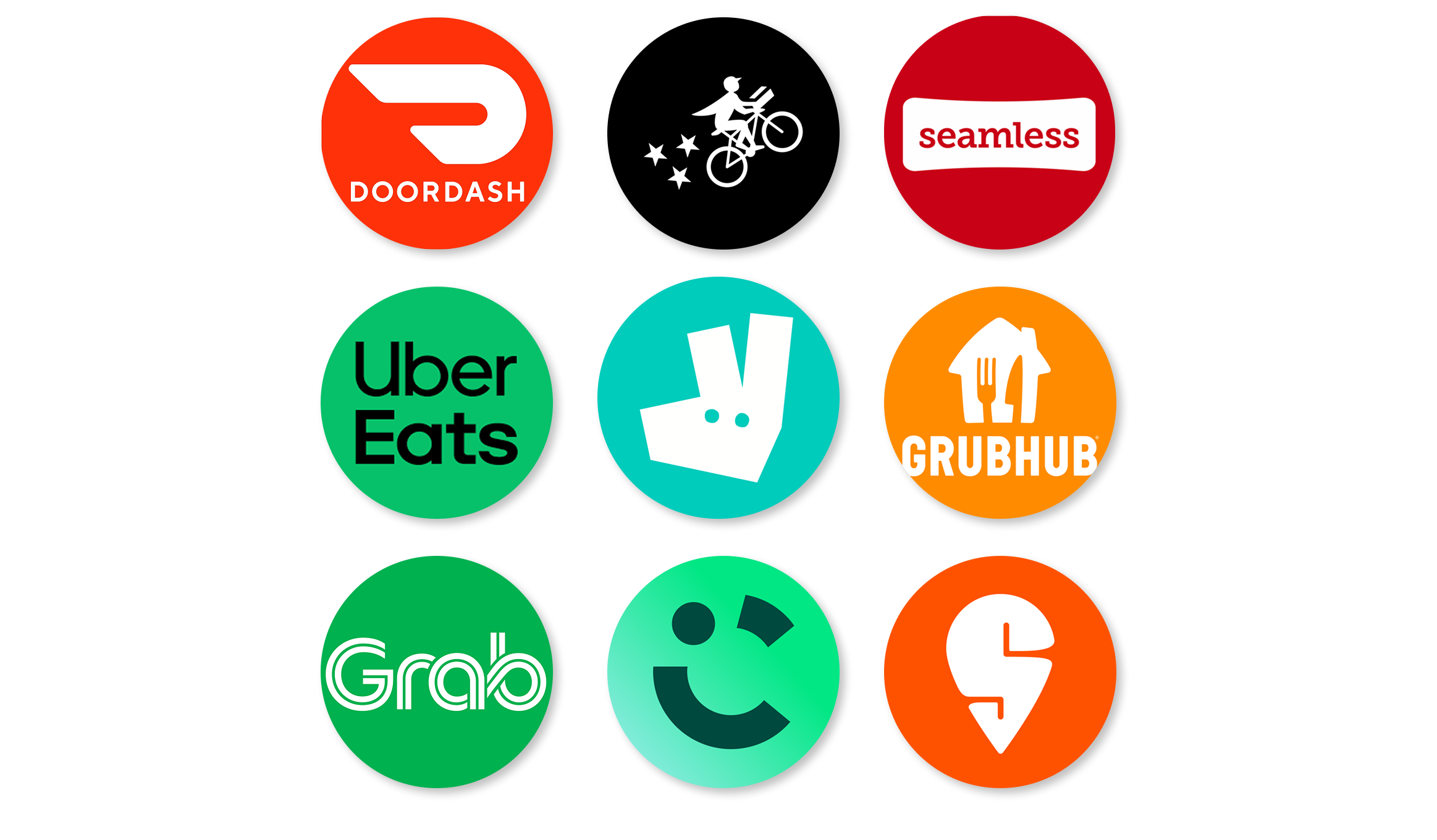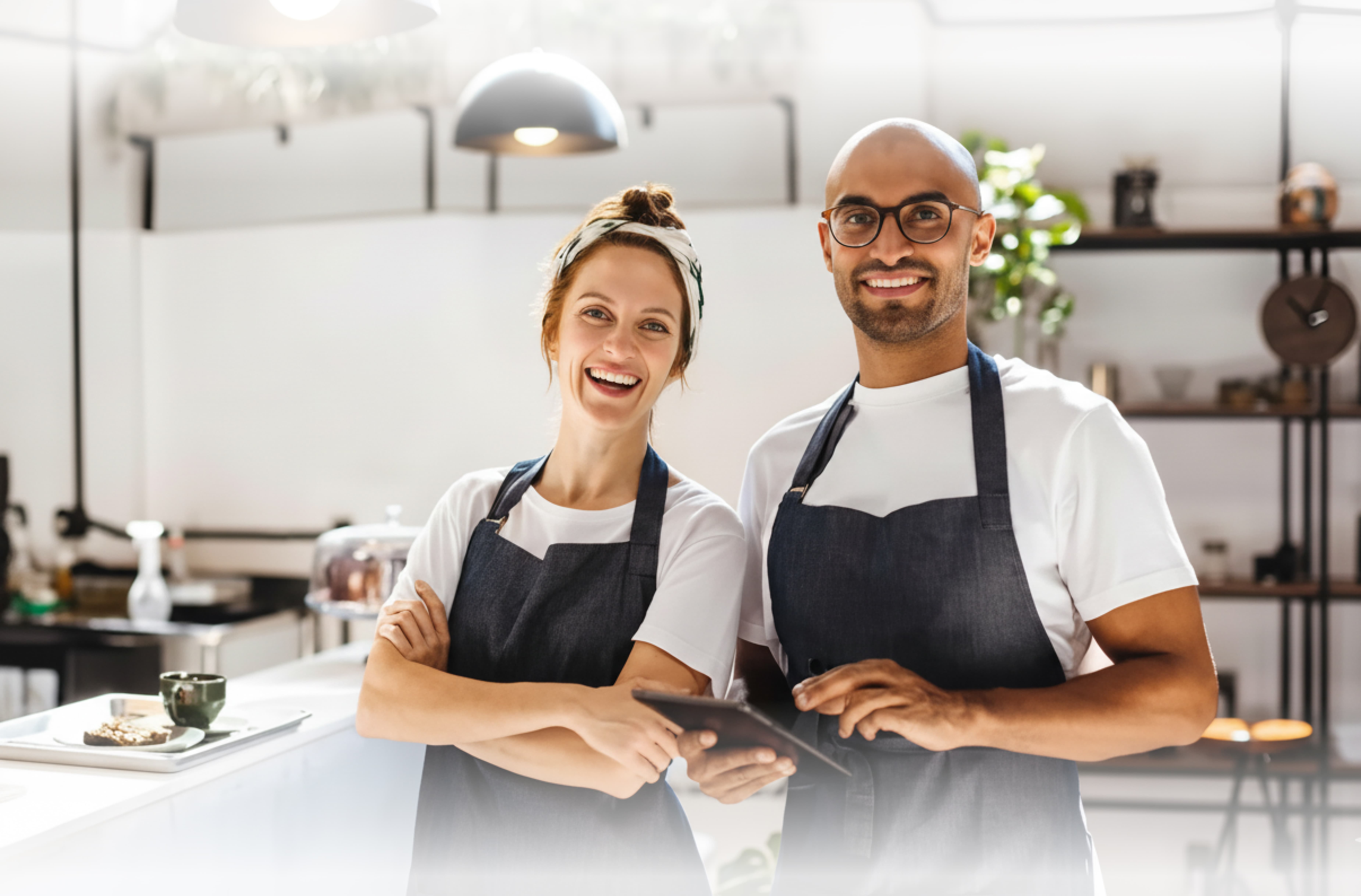Key Takeaways
- The rise of online food delivery is transforming the restaurant industry, projected to grow from $0.68 trillion in 2024 to $1.37 trillion by 2029, driven by consumer demand for convenience and technological advancements that make ordering quick and personalized.
- Offering an in-house online ordering system allows restaurants to control orders, avoid third-party commission fees, maintain brand loyalty, reduce order mistakes, customize menus, keep all profits, lower customer acquisition costs, and gain valuable customer data.
- Emerging trends for 2025 include AI and automation driving efficiency through tools like self-ordering kiosks and automated kitchens, drone delivery becoming a viable option for faster and eco-friendly service, and voice ordering going mainstream for a seamless ordering experience.
- Personalization, loyalty programs, frictionless payments, and a focus on sustainability will be key priorities, catering to consumers' demands for tailored experiences, ethical consumption, and responsible dining choices that align with their values.
The Future of Food: Latest Online Ordering Stats and Trends Reshaping the Restaurant Industry
Imagine the dishes you love today looking completely different in 20 to 30 years. It's not just about shifting tastes—it's about the dining experience changing.
Global challenges, tech advancements, and a push for sustainability will transform how we produce, consume, and even think about food. The rise of AI in kitchens, smarter food ordering systems, and a growing demand for sustainability are all part of this revolution.
Now, if you're going to keep up with this evolving landscape, it's not just about staying on top of the latest dish or trend. It's about knowing your numbers—understanding the industry stats and insights that tell you where the food world is headed. And here's where the restaurant industry numbers start to make their mark.
Restaurant Industry Trends: The Numbers Speak
The U.S. restaurant sector has faced its fair share of challenges—staffing shortages, rising costs, and shifting consumer preferences. But through it all, restaurateurs have stayed agile, boosting efficiency and finding new ways to meet the demand for self-service and faster dining experiences.
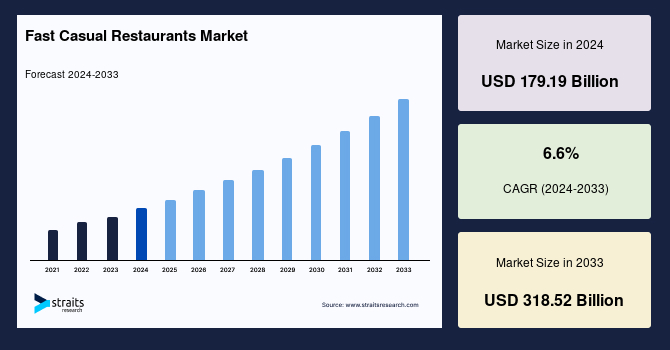
- 40% of restaurants have turned to technology to improve operations and cut labor costs, and 75% have seen improvements post-pandemic (Kroll Restaurant Industry Insights, Fall 2024).
- New regulations, like California's FAST Act, which raises fast-food wages to $20/hr, are shaking up the industry and forcing operators to rethink their strategies.
- According to Straits research, the fast-casual dining all set to soar from USD 191.02 billion by 2025 to USD 318.52 billion by 2033, driven by consumer demand for affordable dining in uncertain times. But the real game-changer? Online food delivery.
The Delivery Boom: Why Everyone's Ordering In
As consumer demand for convenience skyrockets, online food delivery is not just a trend—it's the new standard. The market for food delivery is projected to grow from USD 0.68 trillion in 2024 to USD 1.37 trillion by 2029 at a blistering 15.01% CAGR (Mordor Intelligence). That's a massive shift—and a few key factors drive it:
- Technology that makes ordering quick, easy, and personalized.
- Lifestyle changes, with consumers prioritizing speed and convenience.
- A growing demand for food delivery, especially in tough economic times.
Here's the kicker: although 63% of consumers know the extra costs tied to delivery, they still choose to use delivery apps because of their speed and convenience. In fact, 38% of people say delivery apps are the only way to access their favorite restaurants. But it's not all rosy—40% of consumers who avoid delivery apps point to the extra fees as a significant issue.
Are Ghost Kitchens The Future of Dining Out?
The rise of ghost kitchens is reshaping the food service industry, fueled by the growing demand for delivery. These delivery-only restaurants are expected to capture 50% of the global drive-thru and takeaway market, offering a cost-effective and efficient alternative to traditional locations. The growth of order management technologies has streamlined operations, improving everything from production to delivery.
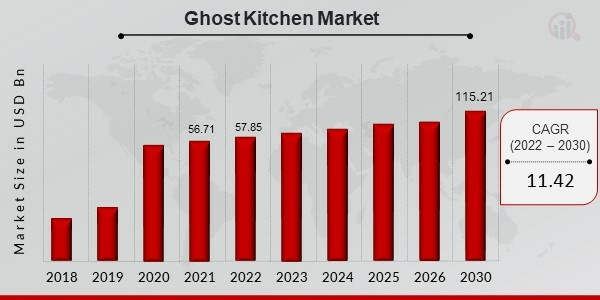
However, ghost kitchens face a challenge in building consumer trust. Without a physical storefront, they rely on online reviews to attract customers. Issues like hygiene, food quality, and delivery delays can harm their reputation, making maintaining high standards and customer engagement crucial.
How Does This All Connect to What Customers Want?
As consumers are more conscious about their purchasing decisions, it's no longer just about the quality of food—the social, environmental, and economic impact of purchases increasingly influences dining choices. Several key factors underpin this shift:
- The desire to support small, local businesses, particularly those prioritizing sustainability.
- There is a growing trend toward ethical consumption, with diners seeking out brands that align with their values.
The numbers speak for themselves: 91% of consumers say they would support small businesses if they are convenient and affordable (Salesforce), and 76% actively seek out brands that prioritize sustainability. This has led to a preference for local, smaller restaurants over larger chains.
But there's more. When it comes to building loyalty, repeat business is crucial. Studies reveal that 80% of profits often come from just 20% of loyal customers, underscoring the importance of retaining regulars.
Now, regarding convenience, the stakes are higher than ever. 65% of customers are willing to pay more for faster delivery, driving the shift toward online ordering. In fact, offering a streamlined, efficient ordering system can increase sales by up to 20%.
Incentives like loyalty programs and discounts also play a significant role in driving repeat business. 45% of consumers say they are more likely to order from restaurants that offer these perks, highlighting the growing demand for dining experiences that fit seamlessly into their lifestyle.
But here's something to consider: 94% of consumers will avoid a business with bad reviews. Negative feedback can have a serious impact, but there's an opportunity in it. Restaurants that respond to negative reviews show customers they care, and 45% of consumers are more likely to visit a business that addresses criticism, demonstrating the power of engagement and feedback in creating positive experiences.
The Stats Behind Why You Need an Online Ordering System
According to Fundera, 59% of restaurant orders from millennials are for takeout or delivery, with 33% of these consumers willing to pay a premium for faster delivery.
But here's the catch: third-party apps like DoorDash and Uber Eats charge hefty commission fees, which can affect your profits.For restaurants, relying too much on third-party services can quickly become unsustainable, especially as delivery orders increase. That's where platforms like Restolabs come in.
By offering your online ordering system, you can control your orders and customer relationships while avoiding the high fees of third-party apps. You can customize everything to match your brand and create a better overall experience. Here's why it's worth considering:
- More Sales, Less Pressure: Online ordering allows customers to explore your menu, leading to larger orders. They're not rushed like they might be when ordering in person, and that extra dish or drink can make a difference.
- Maintain Brand Loyalty: Even if your customers order from home, you can still make them feel special. Add personalized thank-you messages and branded receipts to keep your restaurant's personality front and center.
- Fewer Mistakes, Better Accuracy: Giving customers control over their orders helps reduce miscommunication. Plus, they can quickly note any dietary restrictions or allergies, ensuring a more accurate and satisfying experience.
- Complete Control Over Your Menu: An in-house ordering system lets you manage your menu, pricing, and design. No more relying on third-party platforms that don't reflect your brand how you want. You can make instant updates as needed.
- Keep All the Profits: You keep 100% of the revenue without third-party commissions taking a cut. That means more profit and better control over your costs.
- Lower Customer Acquisition Costs: While third-party apps are great for exposure, driving repeat business through your online system is where the savings add up. Offering discounts for future orders encourages customers to come directly to you, cutting costs long-term.
- Gain Insight into Your Customers: In-house systems provide valuable data on what your customers like to order when they order. This allows for targeted marketing and personalized promotions that keep them coming back.
Emerging Trends in Restaurant Online Ordering for 2025
Trend #1: AI and Automation driving efficiency:
AI is set to revolutionize restaurant operations. It's moving beyond just chatbots and inventory management. Tools like self-ordering kiosks, QR Code ordering, dine-in ordering and automated kitchens are tackling the ongoing staffing shortage, with 45% of operators still struggling to hire enough employees. These technologies help speed up service, improve accuracy, and let staff focus on delivering a better guest experience. Smarter kitchen automation is also making waves, with companies like Chipotle using AI-driven platforms to streamline food prep without sacrificing quality.
Trend #2 : Drone Delivery Becomes a Real Option
Drone delivery is no longer just science fiction. Companies like Flytrex have already completed thousands of successful deliveries, and by 2025, drones will be a common sight in urban areas, offering faster, greener, and more efficient delivery options. Drones are set to solve the delivery driver shortage and reduce traditional delivery methods' traffic and environmental issues. Get ready for faster, eco-friendly deliveries that make dining even more convenient.
Trend #3: Voice Ordering will go mainstream.
Voice ordering will soon be second nature for customers, offering a seamless and efficient experience. Imagine placing an order through Alexa or Google Assistant without lifting a finger. Predictive systems will know what you want based on past orders, the time of day, or even the weather. Multi-language capabilities will make ordering accessible to everyone, and real-time menu optimization will highlight profitable items while reducing waste. Integrated with apps, voice systems will recognize customers, ensuring a personalized experience that makes ordering faster and more convenient than ever.
Trend #4: Personalization and Loyalty Take Center Stage
McAlister's Club MCA is a great example of how loyalty programs evolve in 2025. After beta testing, the brand saw a noticeable increase in customer satisfaction and engagement, proving that personalized loyalty programs really make a difference. Loyalty is now more than just a points system; it's a fully integrated strategy, driven by data, that connects with customers at every touchpoint. Expect more QSR brands to jump on board, offering tailored experiences that keep customers returning.
Trend #5: Frictionless Payments & Pickup
In 2025, embedded payment systems will enhance restaurant operations and customer loyalty. The use of loyalty programs increased by 28% in 2024, highlighting the shift toward more personalized, integrated experiences. Customers can pay seamlessly through apps, QR codes, self-service kiosks, or smart tables. This speeds up transactions, improves table turnover, and supports loyalty programs, ensuring that repeat customers are rewarded while boosting overall efficiency.
Trend #6:Sustainability isn't just a buzzword.
Sustainability is more than just a buzzword in 2025—it's becoming an integral part of restaurant operations. With growing concerns around climate change, food waste, and ethical sourcing, restaurants will focus on menus prioritizing sustainability. From locally sourced ingredients to plant-based options, reducing food waste, and supporting fair-trade products, this shift is all about catering to the growing demand for responsible dining choices.
Final Thoughts
As we look ahead to 2025, restaurants must adapt quickly to changing consumer behaviors and industry trends. With shifts like fewer alcohol and dessert orders, restaurants will need to rethink their revenue strategies. At Restolabs, we're all about helping restaurants streamline their operations with real-time insights that drive profitability, allowing operators to focus on their guests. Try it for yourself for the next 30 days, at no cost! .
We provide the tools to optimize the customer experience, personalize offers, and manage resources efficiently. By identifying revenue opportunities, tracking customer preferences, and improving order accuracy, we help restaurants stay ahead of the curve—without losing the personal touch that makes dining unique. We aim to support restaurants with intuitive technology that enhances every aspect of online ordering helping them thrive in this fast-changing industry.
Frequently Asked Questions
By offering your own online ordering system, you can control the customer experience, avoid high third-party commission fees, and keep 100% of the profits. You also gain valuable customer data insights, can customize the system to match your branding, and make menu updates instantly. Overall, it leads to higher sales, better accuracy, and lower customer acquisition costs.
Online ordering allows customers to browse the menu at their own pace, leading to larger orders than in-person. They can carefully review options without feeling rushed. Plus, you can maintain brand loyalty by adding personalized touches like thank-you messages. The convenience also drives more orders overall.
With a platform like Restolabs, setting up online ordering is straightforward. First, sign up and provide your restaurant details and menu items. Then, customize the look and feel to match your branding. Finally, integrate the online ordering system with your website or Facebook page, and you're ready to start accepting orders directly from customers.
By giving customers full control over their orders through the online system, you reduce miscommunication and mistakes. Customers can clearly specify any dietary restrictions, allergies, or special instructions right in the order. This ensures a more accurate and satisfying experience compared to phone orders.
Key trends include AI/automation for efficiency, drone delivery, voice ordering integration, personalized loyalty programs, frictionless payment options like QR codes, and a focus on sustainability across menus and operations. Adopting these innovations will be crucial for staying competitive and meeting changing consumer demands.
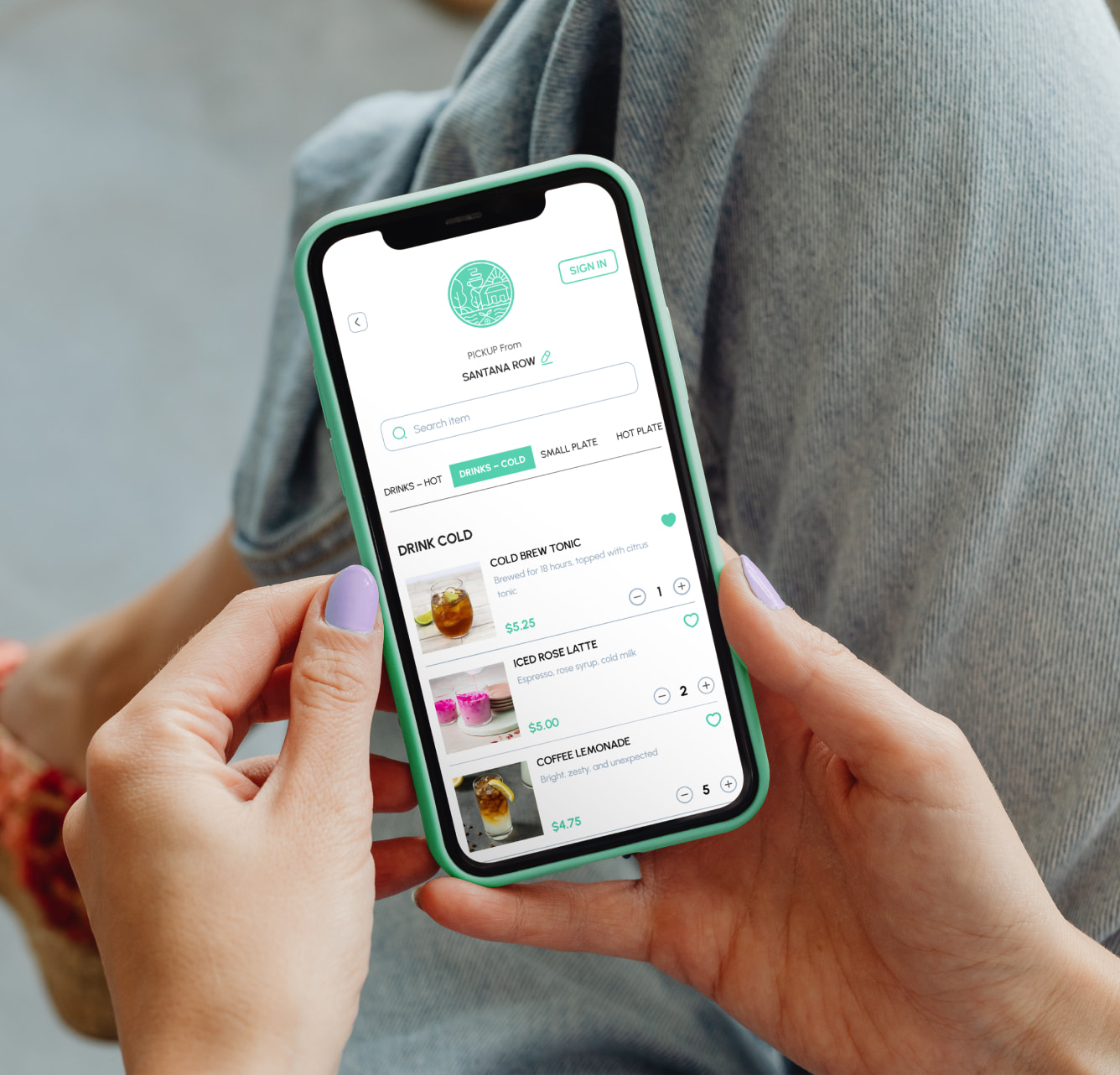

.gif)
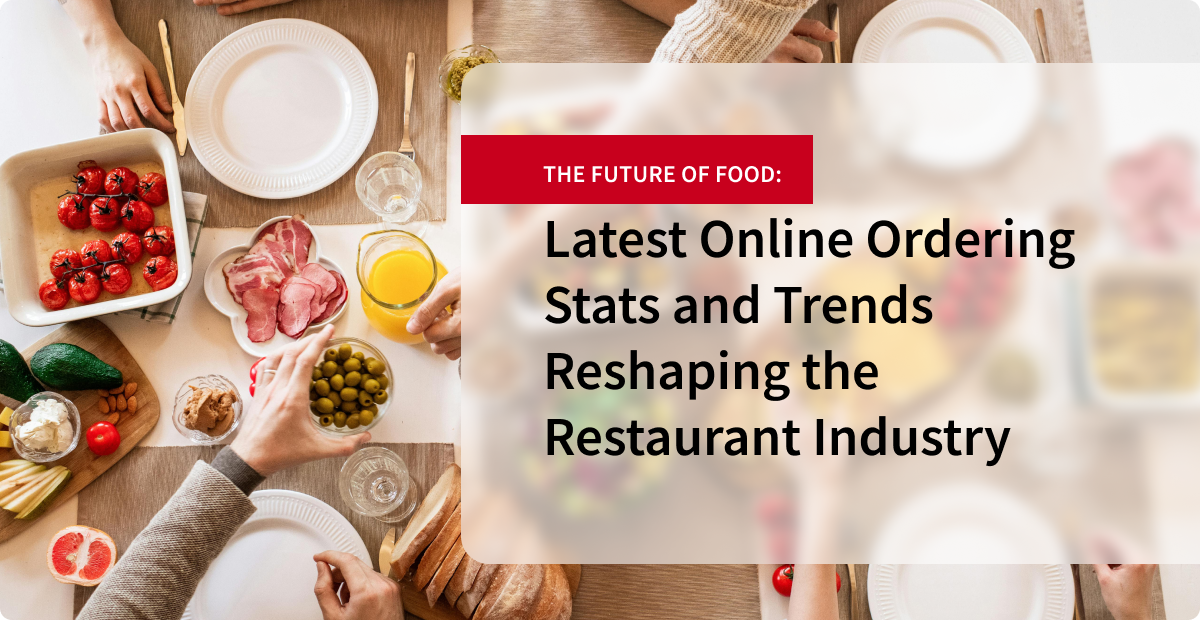
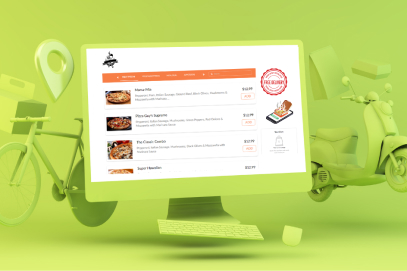
.png)
